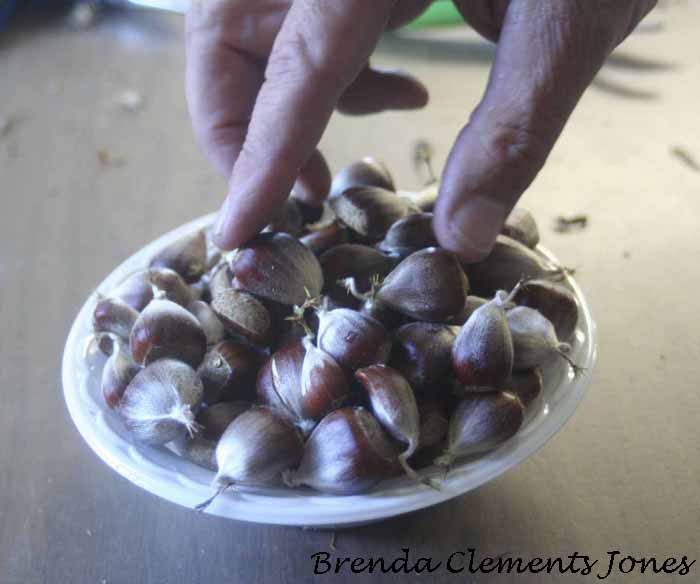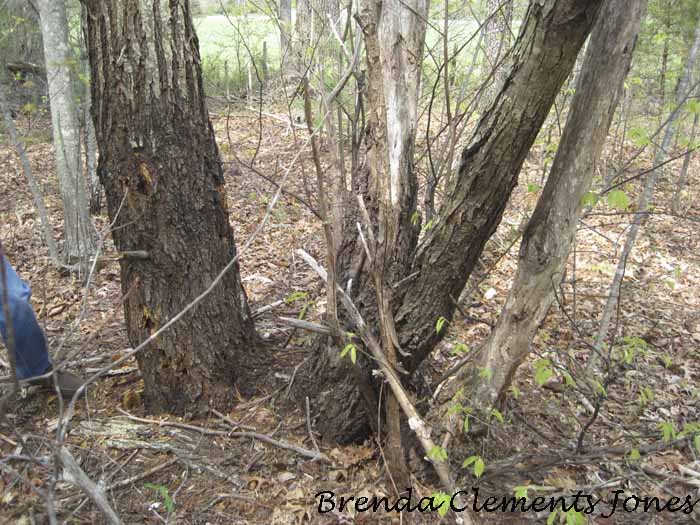A Harvest Better Than Expected
My day was off to an excellent start. This spring, using pollen that had been collected from trees at the American Chestnut Foundation‘s research farm in Meadowview, Virginia, a tree that we call VA0333, The Rosebrook Tree, was for the third year in the row pollinated. This was at the height of a visit from Periodic Cicadas. The females Cicadas had done their work on The Rosebrook Tree. Slits were visible on some of the ends of branches, high up in the tree’s canopy, even on branches that had flowers. The pollen was applied in hopes that some of the flowers would live and develop burs containing seeds to be used for further research. This morning as the bucket truck went to the top of the tree, it became evident that there were some burs but only a few. But I was prepared for the worst, so just a few was way better! Hooray!

Virginia Harvest
The chestnuts in the photo above were harvested in 2010, the first year that I become involved with the Virginia Chapter of the American Chestnut Foundation. Since that time I’ve come to appreciate more than ever the amazing things that are being done in the Foundation. We are making progress!

Here She Is!
This is The Rosebrook Tree. She’s fighting but won’t be around much longer. She’s got the blight, as all pure American Chestnut trees will get. No getting around that. I have 9 pure American Chestnut trees at the front of my cabin. They will get the blight. But The American Chestnut Foundation is cross-back breeding American Chestnuts with Chinese Chestnuts. The aimed for result is a chestnut tree that is American in its growth habit — a very tall and straight tree, with blight resistance.

Here Is The Blight
This is a struggling American Chestnut sprout high up on my mountain. Do you see the splits on the bark and the orange fungus? This is the blight. The roots of the American Chestnut do not get the blight because they are not exposed to the air. The roots keep sending up sprouts which usually die back within a couple years. But with the research that’s been done and continues, there will be American Chestnut trees growing in the tree’s native range again — given time and much continued work.